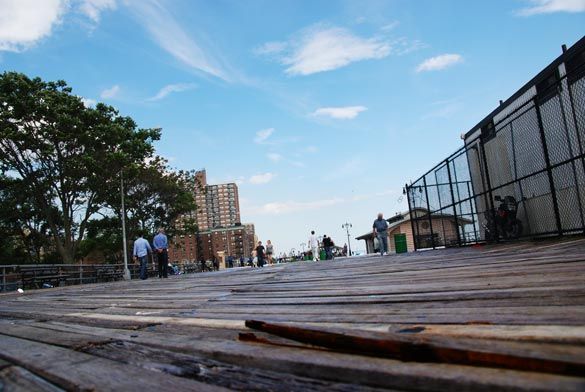Groups Sue City To Prevent Concrete Boardwalk In Coney Island

The following is a press release posted on Friends of the Boardwalk’s Facebook page:
Various grassroots organizations, and Coney Island and Brighton Beach Residents have filed a lawsuit in New York State Supreme Court in Brooklyn seeking to prevent the New York City Department of Parks and Recreation from destroying the historic Coney Island Boardwalk and replacing it with a plastic and concrete structure.
According to the lawsuit, the Parks Department abused its discretion when it decided that its plan for the Boardwalk was not subject to any environmental review, even though the potential for negative environmental impact is obvious and far-reaching.
Factors such as erosion, flooding, drainage problems and impact on existing use must be considered. Additionally, an agency must consider the project’s impairment of the character or quality of important historical or aesthetic resources and existing community or neighborhood character.
Among the impacts not considered:
Concrete, which does not allow for drainage, creates a heightened risk of flooding and beach erosion when there are storms.
The lack of drainage, in addition to damaging the concrete and plastic itself, also causes snow and rain to ice over in the winter, creating hazardous conditions and necessitating the use of hazardous chemicals and/or snow plows to clear the area.
The increase in temperature of the concrete surface as compared to natural wood can cause an urban island effect, resulting in increased energy consumption, elevated emissions of air pollutants and greenhouse gases and impaired water quality in the surrounding community.
The replacement of cracking concrete and buckling plastic may require the wholesale removal of sections of materials, causing greater environmental damage and disruption to activities than removal of one damaged wooden plank would cause.
The demolition of the iconic wooden boardwalk that has been in the community for nearly 90 years and it’s part of a world-famous area would significantly impair the character and quality of what is obviously an important historical and aesthetic resource. Additionally, the demolition would equally impair the Coney Island and Brighton Beach communities.
Concrete and plastic absorb substantially less force than wood and therefore place far greater stress on the body. Consequently, people who enjoy the boardwalk for running and walking will be greatly restricted in their ability to use the boardwalk as they have for decades.
Additionally, the lawsuit asserts that the Parks Department is trying to achieve its long term plan to destroy most of the boardwalk, aside from one four block section, and replace it with plastic and concrete without conducting a proper environmental analysis of this large scale action by improperly segmenting the plan.



